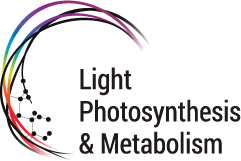Energetic coupling between photosynthesis and respiration
15th July 2015
In this work, we dissect the physiological role of the transient photosynthetic stage observed in developing seeds of Arabidopsis thaliana. By combining biochemical and biophysical approaches, we demonstrate that despite similar features of the photosynthetic apparatus, light absorption, chloroplast morphology and electron transport are modified in green developing seeds, as a possible response to the peculiar light environment experienced by them as a result of sunlight filtration by the pericarp. In particular, enhanced exposure to far‐red light, which mainly excites photosystem I, largely enhances cyclic electron flow around this complex at the expenses of oxygen evolution. Using pharmacological, genetic and metabolic analyses, we show that both linear and cyclic electron flows are important during seed formation for proper germination timing. Linear flow provides specific metabolites related to oxygen and water stress responses. Cyclic electron flow possibly adjusts the ATP to NADPH ratio to cope with the specific energy demand of developing seeds. By providing a comprehensive scenario of the characteristics, function and consequences of embryonic photosynthesis on seed vigour, our data provide a rationale for the transient building up of a photosynthetic machinery in seeds.
Allorent G.,Osorio S., Ly Vu J., Falconet D., Jouhet J., Kuntz M., Fernie A. R., Lerbs-Mache S., Macherel D., Courtois F.* and Finazzi G. (2015). Adjustments of embryonic photosynthetic activity modulate seed fitness in Arabidopsis thaliana. New Phytologist. 205(2):707-19. doi: 10.1111/nph.13044.


